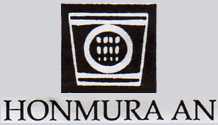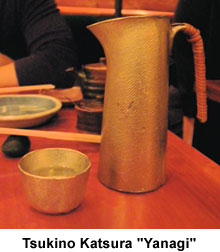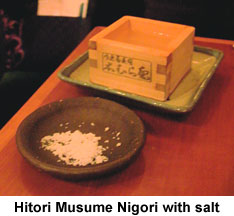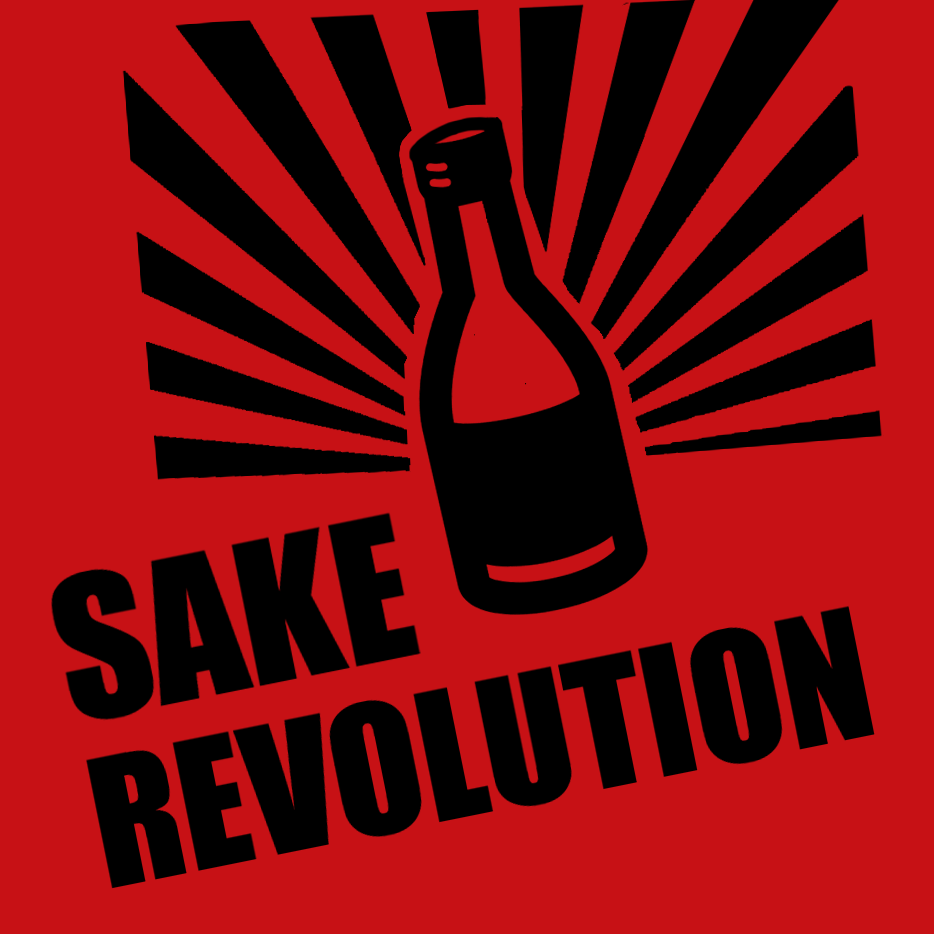Honmura An
 In New York City, we have more opportunities sip Japanese sake than maybe just about anywhere outside Japan. On the one hand, this may very well be the reason I have never been able to find the money for a down-payment for a condo. On the other hand, Scott and I have discovered some superb sake and had some utterly sublime meals.
In New York City, we have more opportunities sip Japanese sake than maybe just about anywhere outside Japan. On the one hand, this may very well be the reason I have never been able to find the money for a down-payment for a condo. On the other hand, Scott and I have discovered some superb sake and had some utterly sublime meals.
My recent experience at SoHo’s Honmura An (170 Mercer St, 212-334-5253) was just such a Condo-Payment-Be-Damned transcendent sake-food pairing experience.
This place is off ‘da hook. We both loved it, and before we get to the sake, let me say straight away we had the best service. Our waitress was attentive, efficient, informed yet completely unobtrusive. Such a rarity in NYC, I felt like visiting royalty.
 Honmura An’s claim to fame is the soba, but I focused more on the sake. The Sake menu was substantial but not overwhelming. There were some sakes that I knew such as Kubota Manju, Tamano Hikari, Urakasumi, and Harushika Choukara .
Honmura An’s claim to fame is the soba, but I focused more on the sake. The Sake menu was substantial but not overwhelming. There were some sakes that I knew such as Kubota Manju, Tamano Hikari, Urakasumi, and Harushika Choukara .
I decided to go with a tokkuri of Tsukino Katsura “Yanagi” (Junmai Ginjo, Kyoto Prefecture, ). The hammered metal tokkuri was quite beautiful and solid. The ochoko was made of the same metal and was also heavy. I liked this substantial sake service – it made me “weigh” each sip and pour so my sake actually lasted longer. The sake itself was really, really good. I was happy with my selection! “Yanagi” was lightly fragrant as well as smooth and perfectly balanced on the palate. The flavors were elegant and nicely complex. The finish lingered a bit which was a happy way to end each and every sip.
 Scott ordered the Hitori Musume Nigori (Ibaragi Prefecture) This Nigori was really good without losing any street cred. It’s light – not a lot of thickness or texture to it. There is a noticeable Alcohol kick on this finish. I found it a tiny bit rough and tumble around the edges, but overall a solid choice. I would recommend Hitori Musume to people freaked out by chunky nigori soup.
Scott ordered the Hitori Musume Nigori (Ibaragi Prefecture) This Nigori was really good without losing any street cred. It’s light – not a lot of thickness or texture to it. There is a noticeable Alcohol kick on this finish. I found it a tiny bit rough and tumble around the edges, but overall a solid choice. I would recommend Hitori Musume to people freaked out by chunky nigori soup.
Scott’s nigori was served in an raw wooden masu with salt on the side. I’d never seen this done anywhere else I’ve been and this would be my only critique of Honmura An. The raw wood can really do a number on the nuanced flavors of some sakes and it’s not recommended. I did a little research on this whole ‘salt on the side’ thing and found this John Gauntner’s Newsletter from 2002:
The pinch of salt on the corner is interesting as well. According to one source (there are sure to be many opinions), the salt should not be placed just on the corner, but a bit to the side of it, so that when one drinks, the salt touches the corner of the lips, not dead center. This allows the sake to be the main flavor, with the salt on the side. Note, the salt should not be allowed to fall into the sake.
Why salt? According to the same source (a historian at one of the large breweries in Japan), the salt was more for the proprietor than the consumer. Salt is often used in purification rituals in Japan, as well as for good luck in drawing customers to places of food and drink. Apparently this superstition was one big reason for putting the pinch of salt on the edge of the masu. But again, there are sure to be other interpretations.
Also, long ago sake was stronger and much sweeter, and simple things like salt and miso were often used as snacks while drinking. A bit of salt was also thought to stimulate the appetite and make the sake itself more enjoyable.
So if you go, just ask for the metal tokkuri and not the masu.
Just a quick word about Honmura An’s shrimp tempura. I guess this shrimp is flown in from Japan and it has a price tag to match, but you cannot miss it if you go to Honmura An. Scott’s sake paired beautifully with this and, well, yum!
So, if you don’t have any qualms about putting off your visit to the mortgage loan officer at the bank, book a reservation at Honmura An instead. You may live in a rental for a little while longer, but I promise you, you’ll eat like a king.


